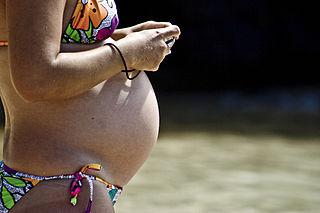- Home
- Blog
Blog
Posted on 11th Aug 2014

The 9 months of pregnancy is an exciting time of looking forward to giving birth. At the same time it is a physical and emotional roller-coaster to be in due to the pains and the morning sickness secondary to the changes in hormones. MicGilvery & Reed gives aromatherapy remedies for the common ailments that a pregnant woman is going into (1).
1. Backache
Ø Massage the lower back region with a mixture of lavender (4 drops) and sandalwood (4 drops) to 2 tablespoon of base oil
Ø Use 6 drops of lavender in the bath tub or the water you’re going to wash yourself with
2. Morning Sickness
Ø Drink chamomile, orange blossom, or peppermint tea
3. Heartburn
Ø Drink peppermint tea
Ø Rub 1 tablespoon of base oil mixed with lemon (2 drops) and peppermint (2 drops) essential oils to the solar plexus area (right below the center of the ribs)
4. Sore breasts
Ø Gently massage the breasts with 1 tablespoon of sweet almond oil (or other base oil) mixed with 3 drops of rose and 3 drops of orange essential oils.
Ø For swollen breasts use a cool compress of rosewater
Ø When already breastfeeding, never use essential oils because the baby can get intoxicated. Just use sweet almond oil on the breast especially on sore and cracked nipples.
5. Constipation
Ø Massage stomach and lower back with 1 tablespoon of base oil mixed with 4 drops of chamomile or orange
Ø To help your muscles relax, bathe with 3 drops of lavender and four drops of rose mixed with your tub or pail bathing water
6. Sleep problems
Ø Bathe with 8 drops of neroli, rose, and ylang-ylang essential oils in combination (it’s up to you how many drops you want for each oil, the total has to be 8 drops).
Ø Put two drops of lavender oil on the pillow edge
7. Stretch marks
Ø On the onset of the stretch marks, massage the area daily with 5 drops of lavender mixed with 1 tablespoon of base oil, until you give birth and have your tummy return to its original shape.
8. Swollen ankles
Ø Have a warm footbath with 2 drops each of benzoin, rose, and orange.
9. Varicose veins
Ø Apply gently 2 tablespoons of base oil mixed with 2 drops each of lemongrass, cypress, and lavender. If veins are prominent, use 4 drops of geranium mixed with 1 tablespoon of carrier/base oil.
10. During labour
Ø You could massage using rose, neroli, lavender, or ylang-ylang to stimulate contraction.
Ø You could also use the essential oils above as a room fragrance. Use a diffuser or candle oil burner.
11. After birth
Ø For baby blues, bathe with jasmine or ylang-ylang will help you feel better
Ø For baby blues (hormonal imbalance), use body oil of 2 tablespoons of carrier/base oil mixed with 5 drops of chamomile, geranium, and orange.
Ø For pains, lavender will be soothing. Tea-tree is good to help heal wounds and stitches
These essential oils must be prevented during pregnancy because they are diuretic with a “tendency to induce menstruation” – bay, basil, clary sage, comfrey, fennel, hyssop, juniper, marjoram, Melissa, myrrh, rosemary, thyme, and sage. These are never to be used “because of their potentially toxic nature and strong abortive qualities”—oreganum, tansy, wormwood, pennyroyal, and St. John’s Wort.
Visit our store at 2W 14th St. New York NY for a selection of essential oils you could choose from.
Reference:
(1) McGilvery, C. & Reed, J. (2000). Aromatherapy for Health, Beauty, & Well-being. NY: Hermes House Anness Publishing Inc.
Incense as Aromatherapy
Aromatherapy is healing through scent. It is considered as an alternative medicine which aims to “enhance psychological and physical well-being” (What is Aromatherapy, 2010.) Typically it comes in the form of concentrated essential oils from “flowers, bark, stems, leaves, roots, or other parts of a plant.” Its mode of application is through inhalation (direct from [...]
A Quick Aromatherapy Timeline
In ancient recordings (5,000 B.C.) we can find the first use of plants as aromatherapy in Egypt, Mesopotamia, and Babylonia (Pitman, 2004). You could find it used for their magical-religious ceremonies, medicine, and even during cooking and bathing. Egyptian mummification and embalming is one example. But probably the most popular of all are the gifts [...]
 Loading... Please wait...
Loading... Please wait...